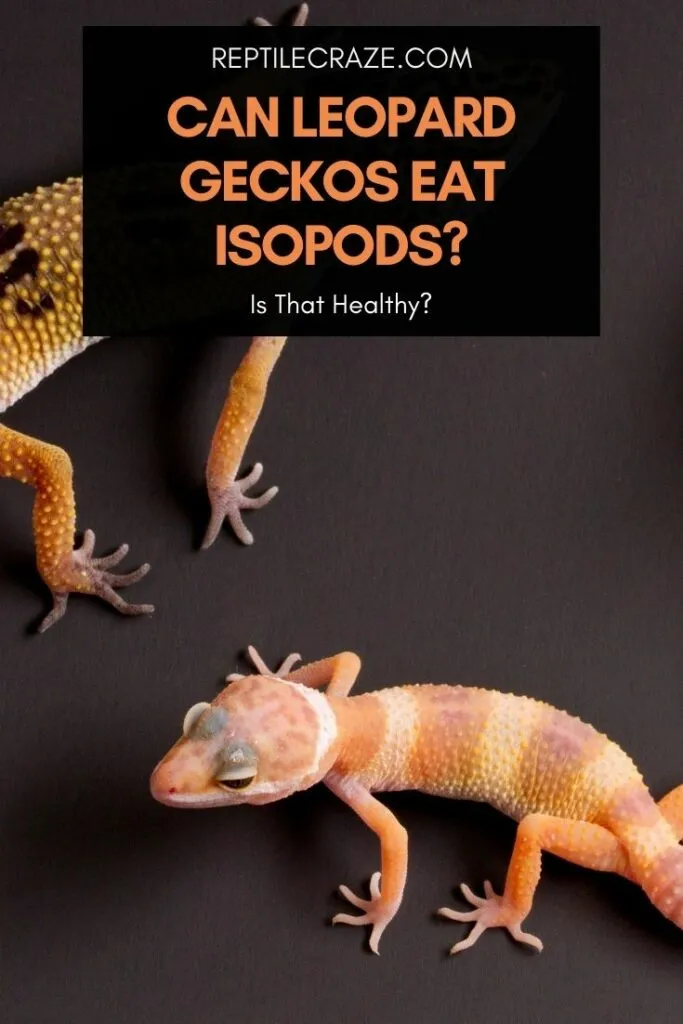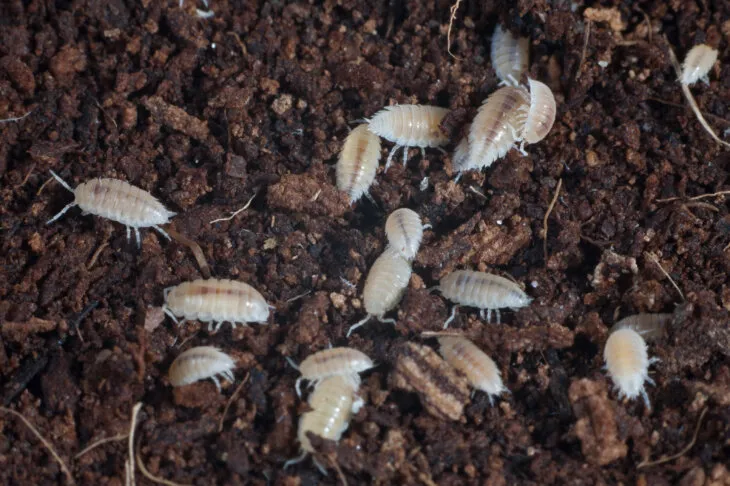
Even though Leopard Geckos are insectivores, some owners consider isopods as nutritious, healthy, and desirable
You can feed your Leopard Gecko with land isopods, like sowbugs, potato bugs, and pill bugs. These crustaceans’ exoskeleton is packed with calcium crucial for keeping your Leo’s bones strong. However, you should not offer them as primary
Providing healthy ingredients for your Gecko is vital. This article will show you why occasional feeding your Gecko with isopods is beneficial.
Table of Contents
Can Leopard Geckos Eat Isopods?
Even though Leopard Geckos can eat any of approximately 10,000 known isopod species, some avoid these creatures because of their unappealing taste.
Some owners believe that they are crunchy and too hard for small lizards and often neglect this
Nowadays, you can find packed live isopods in online shops and many pet stores. Keep in mind that they need to be alive when deciding to use them as
Always offer only a few isopods at a time and be present during feeding.
Some owners claim that these creatures may bite and injure young Leos under certain circumstances. However, it is not officially confirmed, plus other experiences are more positive.
Unlike crickets, it seems that isopods won’t attack even old and debilitated lizards.
Are Isopods Nutritious and Beneficial for Your Leopard Gecko?
No one can tell you how beneficial isopods are for your Gecko since there is still no relevant scientific research regarding this topic.
Some owners believe crustaceans are valuable for their Leos and help them digest
Based on empirical knowledge, it is possible to say that these crustaceans are safe for your Gecko even though they have an exoskeleton made of chitin and protein molecules.
In fact, calcium content is an excellent addition to the lizard’s meal. Some exotic vets recommend adding a few isopods in every seventh meal to balance calcium and phosphorus naturally.
These minerals are a probable reason why females in breeding season look for this
On the other hand, you can find Leopard Gecko owners who claim that isopods are responsible for their pets’ health issues. These creatures may cause intestinal blockages in some cases, but it typically happens after excessive use.
In general, you can offer isopods to your Leo, but be careful and limit their share in the diet. Always check your pet’s behavior after such a meal and monitor its health for possible adverse effects.
Are There Any Dangers of Feeding Your Leopard Gecko with Isopods?
Basically, isopods are not dangerous and won’t hurt your Leopard Gecko. However, feeding it with dead isopods can be questionable, particularly if you collect them in the garden.
In some cases, these crustaceans are packed with insecticides and can indirectly harm your Leo’s health.
Plus, the results of one study show that invertebrate prey, including isopods, bioaccumulate lead from food in their bodies.

How to feed Your Leopard Gecko with Isopods?
As you know, your Gecko needs to intake calcium regularly to stronger its bones. So feeding only isopods is definitely not optimal.
The best food rich in calcium you can offer to it is hornworms or black soldier fly larvae plus isopods, but you should never offer crustaceans daily.
It will be enough to add a few adults to the menu once a week or let them live in your bioactive
Note: Even though some feeder insects are higher in calcium, you should still dust feeder insects with calcium powder.
Isopods as the Ultimate Bioactive Cleaners
Besides offering isopods as
You can expect these decomposers to consume Leopard Gecko fecal material and vegetable matter. That way, crustaceans prevent waste from building up in the
How To Store Isopods As Food For Leopard Geckos
Isopods are easy-to-raise, and many Leopard Gecko owners grow them as affordable
Since they require minimal care, there is no need to spend too much time on their care. It will be enough to buy a
Feed isopods on schedule and never expose them to direct sunlight. It is vital to regularly mist their
The excellent thing is that you can use the same
However, you should avoid adding predatory insects in the same
Conclusion
Even though isopods provide nutrients that your Leopard Gecko can’t get from other insects, you should be prepared that your lizards may refuse to eat them. On the other hand, you can use these creatures as scavengers in the terrarium.
Isopods will keep the place clean, plus your Leo can nibble one or two as treats when it wishes. Since crustaceans are an excellent source of calcium, keeping them inside can be a practical solution.
- Enchi Ball Python: A Unique and Stunning Morph of Python regius - March 27, 2025
- Emerald Tree Monitor: The Enigmatic Green Guardian of the Rainforest - March 26, 2025
- The Egyptian Cobra (Naja haje): A Fascinating Serpent - March 25, 2025
